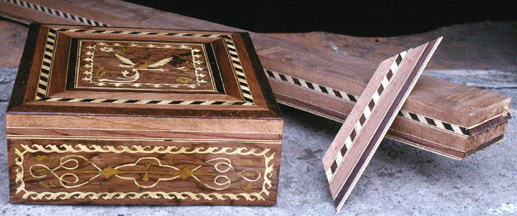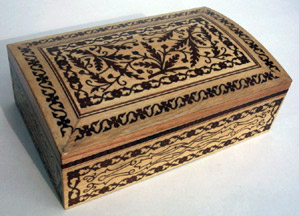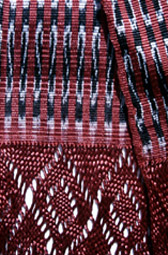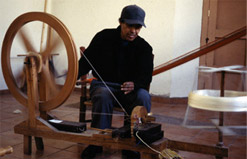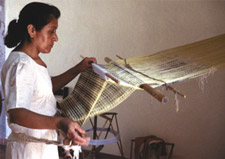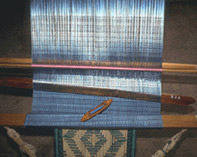| |
|
|
| |
HANDCRAFTS |
|
| |
|
|
| |
|
|
| |
|
|
| |
 |
San Luis Potosi has retained its importance as a regional capital and industrial center, producing textiles and smelting metal, while its districts proudly continue to celebrate their fiestas and traditions. There are native handicrafts as cane baskets, backstrap woven shawls and inlaid wooden boxes. |
|
| |
|
|
| |
|
|
| |
|
|
| |
|
|
| |
|
|
| |
Marquetry |
|
|
|
|
| |
|
|
| |
|
|
| |
|
|
| |
The art of marquetry came to New Spain with the Andaluz craftsmen and gradually spread to other parts of the country, reflecting the styles of each era: Mudéjar, Renaissance, Rococo and Neo-Classic, which invariably revealed the influence of indigenous art. Craftsmen used local wood to make furniture, always looking for chiaroscuro tones. In the late 18th century, this type of work began to be produced in Santa María del Río, with craftsmen developing their own unique style based on nature, which was very different from the marquetry found elsewhere. This gave rise to boxes known as reboceras or cedar-lined boxes since they were just the right size to hold a neatly folded shawl or rebozo. |
|
| |
|
|
| |
| |
|
| |
|
|
Nowadays, craftsmen use balsam, bead tree and walnut, which produce dark tones and blackberry, orange, marmalade fruit and wild fig, which are light-colored woods. The parquetry borders are made by cutting and gluing together woods of contrasting colors. The wood is then cut off in slices and glued to the surface with white glue. After all of the marquetry has been glued in place, the box is sanded, lacquered, and then sanded again. |
|
|
| |
|
|
| |
|
|
| |
|
|
| |
|
|
| |
|
|
| |
Rebozo tradition |
|
| |
|
|
| |
|
|
| |
|
Though some historians still dispute the date of silk's arrival to New Spain, many attribute its introduction to Hernan Cortes in 1552. The Franciscan missionaries that accompanies the conquistadors both catechized and promoted the production of handicrafts, one of which was weaving silk. The pueblo of Santa Maria del Rio, in what would become the state of San Luis Potosi, was one of the first places where the friars successfully managed to cultivate mulberry plants and raise silkworm. So began Mexico's legacy of silk production. This story is a tribute to Santa Maria de Rio and the few remaining bastions of silk rebozo manufacture in Mexico where weavers employ the same techniques which have been used since the sixteenth century.
|
|
|
|
|
|
|
| |
|
|
| |
|
|
| |
|
|
| |
|


